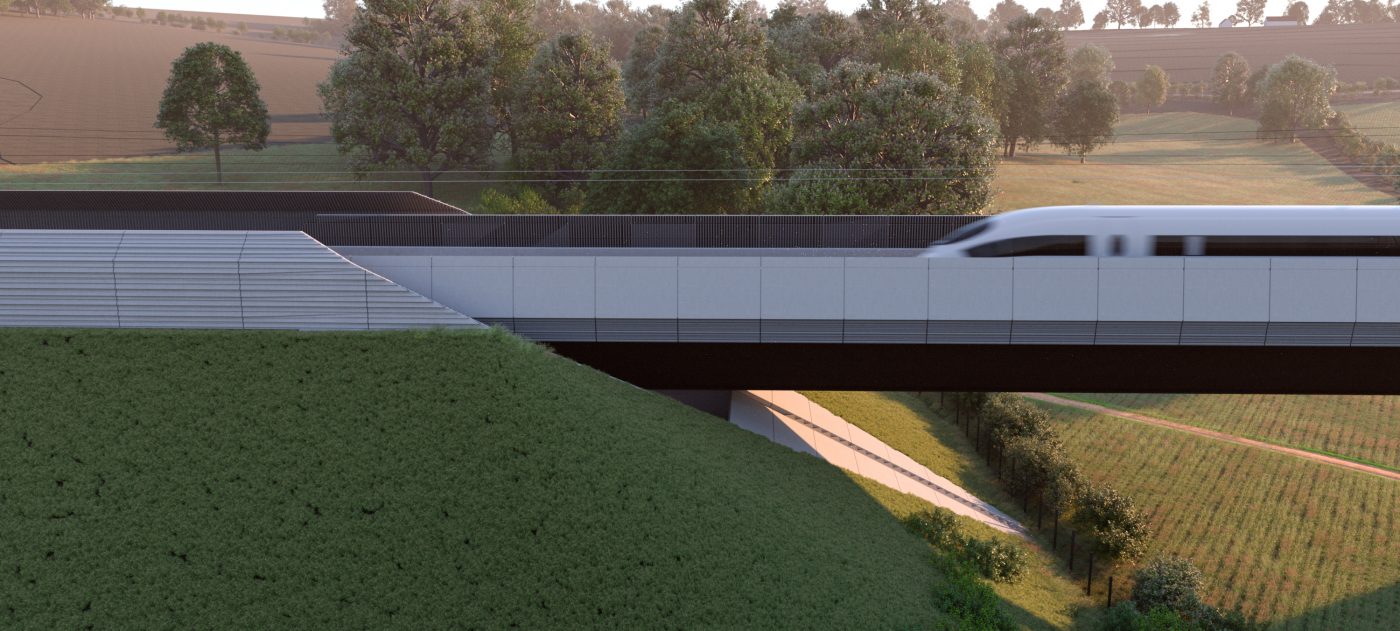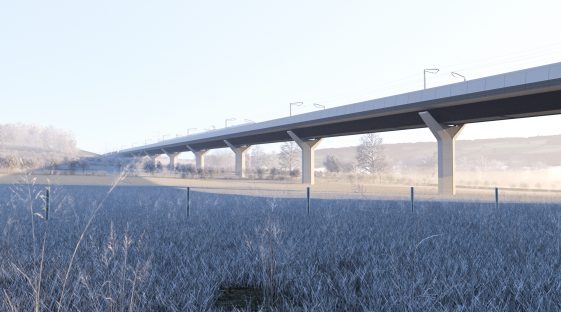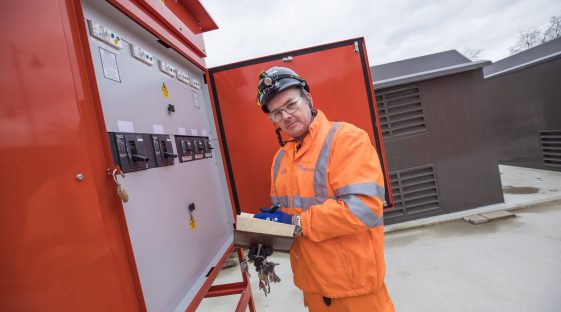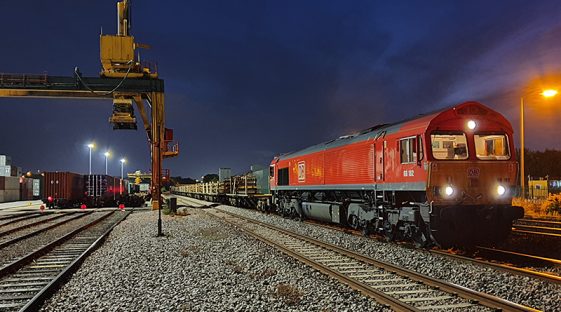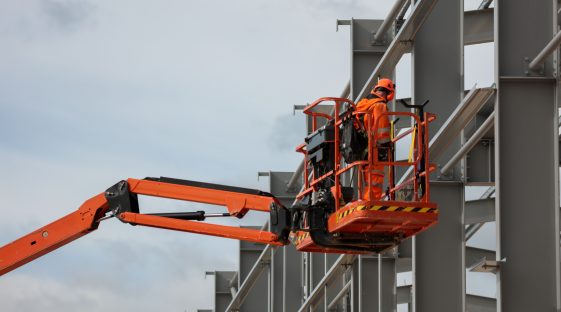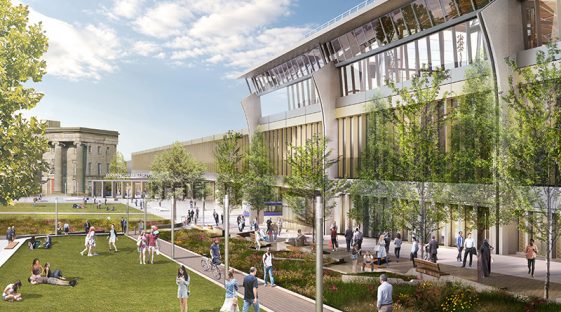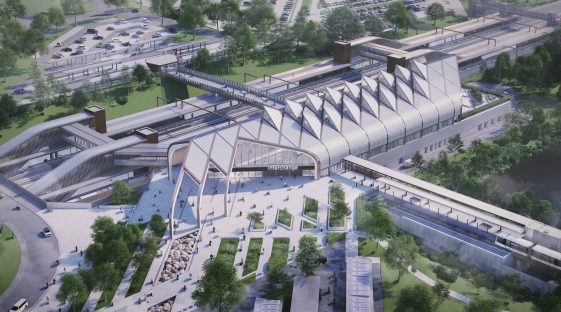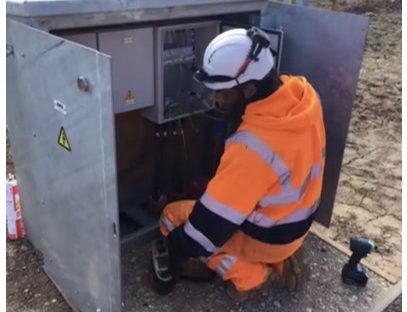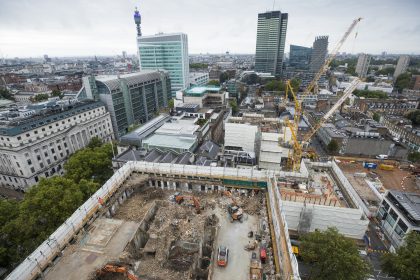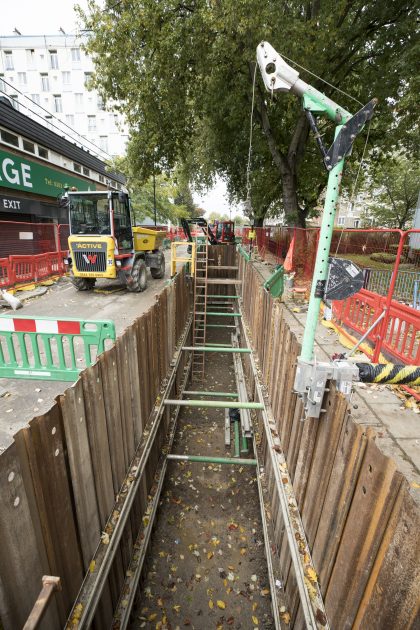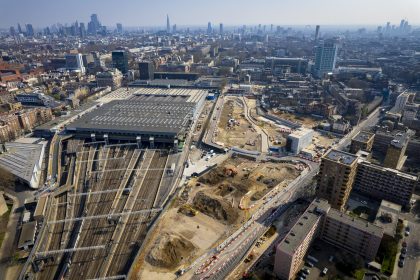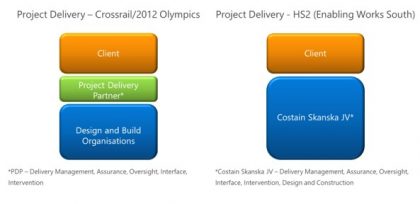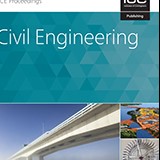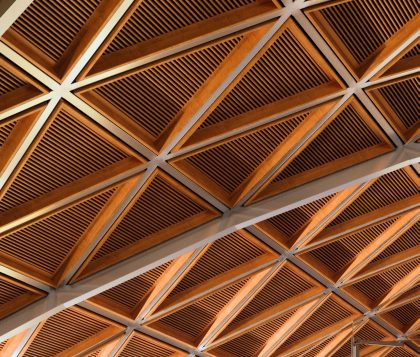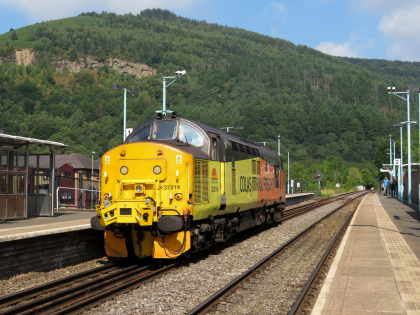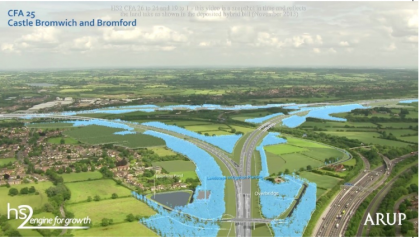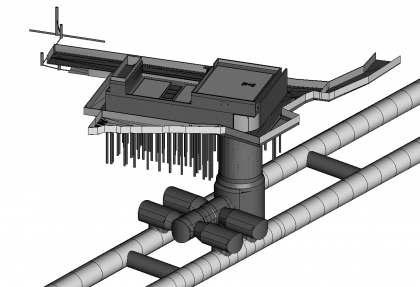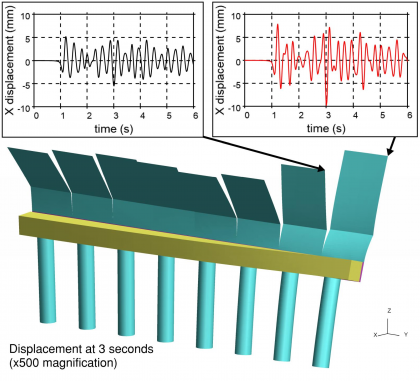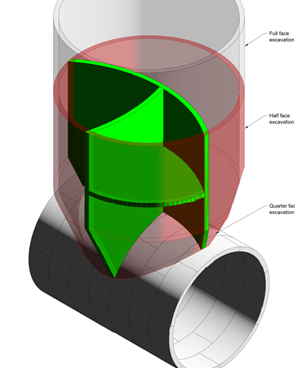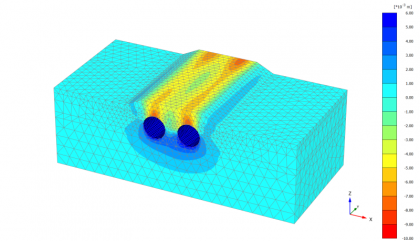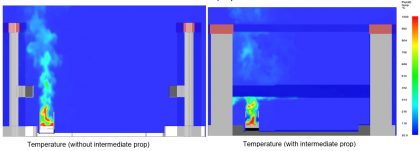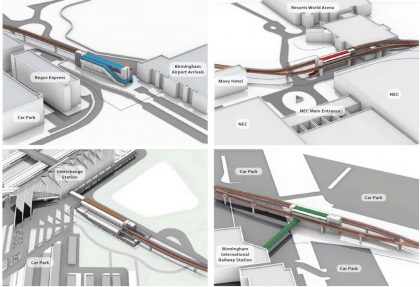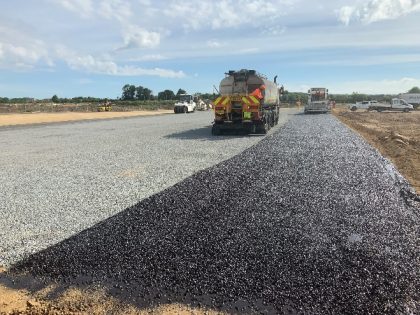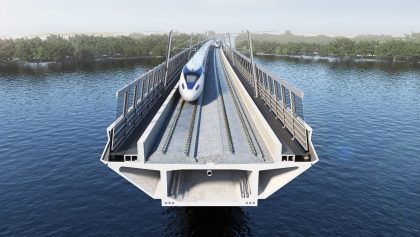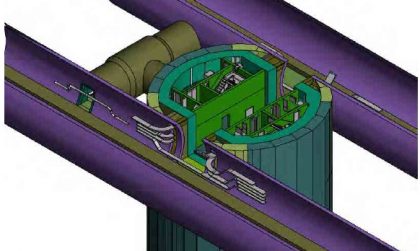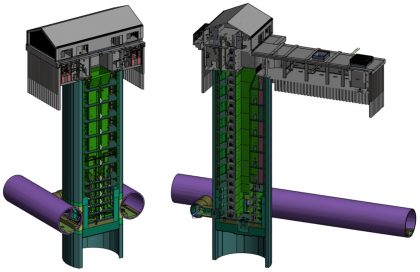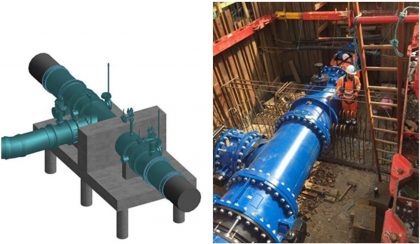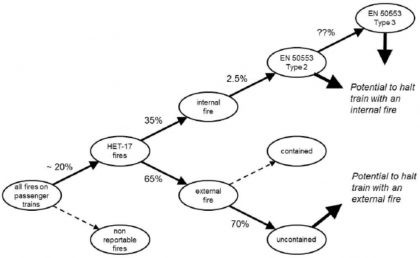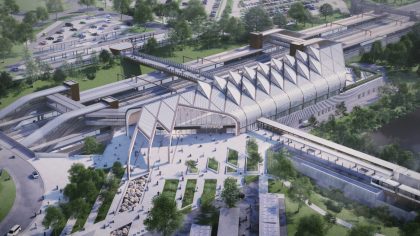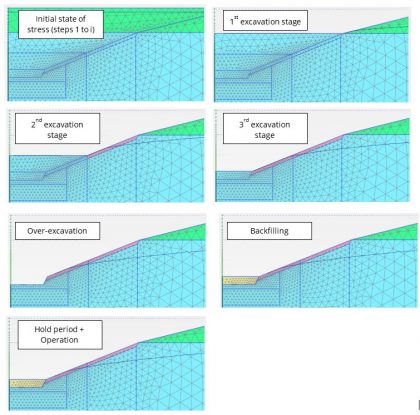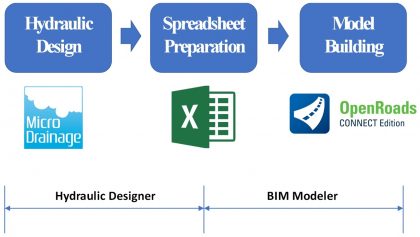Design, Engineering and Architecture
This theme covers the technical design, engineering and architecture for the HS2 Programme
Topic areas
Design, Engineering and Architecture Resources
Resources include papers, videos, research summaries and good practice documents produced by authors from across the HS2 Family to capture learning, good practice and innovation from the HS2 programme
-
Published on
Leading advances in Level 3 Self Certification
On High Speed Two (HS2), the contractor is responsible for ensuring that the Contract and Works Information requirements are followed. Part of these requirements is to deliver a completely self-assured product throughout the lifecycle stages of the project. The Level 3 (L3) certificate attests that the product delivered to the client is fully assured technically…
-
Published on
Planning and managing utilities on HS2 (High Speed 2)
The HS2 Phase 1 utilities portfolio consists of circa 5000 assets impacted by the line and route, defined as diversions, connections, protections, assurance, and removals. As an essential enabling activity for the project, HS2 required a working partnership with the Utility Asset Owner (UAO) to plan, design, deliver the works on the utility assets. There…
-
Published on
Setting up sites for inclusion
There is a growing demand for workplace environments across the construction industry to become more inclusive to attract and retain a more diverse workforce. The installation of multi-faith washing facilities has provided a space for employees to practice their religion, creating a more inclusive and welcoming site environment. This paper contains detailed information about installing…
-
Published on
12-week look ahead schedule during construction
As part of the Enabling Works Contract for High Speed Two (HS2) Phase One, significant works were required in the congested area around Euston, with many different stakeholders involved. All parties required information about where works were taking place, the nature of these works and the impacts on traffic management in the area. Traffic management…
-
Published on
Delivering first line of defence assurance – embedding a design team as a ‘Critical Friend’ within the contractor team
A comprehensive assurance process was developed for design and construction activities on High Speed Two (HS2) - with suppliers providing a first line of defence for a right first-time product. Contractor teams were required to deliver against a diverse and emerging scope of works to challenging programme constraints. To make the best design and CDM…
-
Published on
Aerodynamic design of HS2 tunnels
The aerodynamic design of HS2 tunnels has been achieved through balancing the civils design with the specification of the required aerodynamic characteristics of the rolling stock, resulting in smaller, more economic tunnel cross-sectional areas than would be provided in other countries for the same line speeds. Issues considered include aural comfort and safety for passengers…
-
Published on
HS2 project creates and updates British Standards and guidance to improve delivery
Inefficient and inconsistent use of codes, standards and guidance documents can hamper effective delivery of infrastructure projects. Colin Rawlings of CH2M/High Speed Two Ltd (HS2) summarises initiatives taken on the project to deliver new and updated standards and guidance.
-
Published on
Birmingham Curzon Street Station: A 21st Century Station Roof
Birmingham Curzon Street Station is the planned new northern terminus for Phase One of High Speed Two (HS2), located in the city centre of Birmingham. The Curzon Street Station roof is defined by its efficiency, simplicity and elegance, measuring 280m long by 80m wide and with a clear span of 70m metres over the station’s…
-
Published on
Using Train-Borne Lidar to improve design confidence in railway electrification
The Midland Main Line needs to be remodelled and electrified to accommodate High Speed Two (HS2) train services to Sheffield. This paper addresses how the issue of site surveys, to accurately judge the level of intervention required for the system design, without site access, was solved. Detailed measurements were required on the 26km route, which…
-
Published on
Soils, Landscape and Woodland: How HS2 is using integrated asset information management in a BIM environment.
High Speed Two (HS2) is delivering a new environmental framework alongside the railway infrastructure; creating landscape plantings sites and new ecological habitats and features in advance of the main construction works. Before it comes into operation, Phase One of the HS2 Project intends to create around 650 hectares of new woodlands, to provide new habitats,…
-
Published on
Design of shafts and tunnels to decouple the construction programme
High Speed Two (HS2) Phase One includes the design and construction of six ventilation shafts in Lot S1 (Canterbury Works and Adelaide Road vent shafts) and in Lot S2 (South Ruislip, Mandeville Road, Greenpark Way and Westgate vent shafts). The Scheme Design started with a value engineering exercise; Two key drivers were to minimise disruption…
-
Published on
Special segment design for cross passages and shaft passages
Operational considerations for the High Speed Two (HS2) TBM twin tunnels require cross passage connections and ventilation openings that are critical for not only the safe operation but also for the construction process. Conventionally, temporary support is used to ensure the stability of these openings in the tunnel lining. The use of special segments reduces…
-
Published on
Shallow TBM launch of the Northolt Tunnel West TBMs at West Ruislip
Launching tunnel boring machines (TBMs) from a station box or launch shaft is a delicate operation that requires careful planning to maintain safety. Seven TBMs excavate the tunnels on HS2 Phase Onethe southern section of the High Speed Two (HS2) Phase One route Lots S1 and S2 tunnels and will bore an approximately 23km twin…
-
Published on
Train fire spalling risk assessment
Structural fire protection is provided to structures where necesssary to ensure the resilience of the structure in the event of a fire. Loss of material strength at high temperature and spalling of concrete can lead to structural damage and collapse if not adequately mitigated. However, provision of structural fire protection can add significant cost and…
-
Published on
The slowest part of HS2 – The design of HS2 automated people mover
The HS2 Automated People Mover (APM) provides the link between the new Interchange Station and existing local infrastructure of the NEC, Birmingham International Railway Station and Birmingham Airport. The system therefore provides a key piece of the connectivity of HS2 to the region. Located on an elevated viaduct, the APM is also unique amongst the…
-
Published on
Temporary access road optioneering and cost analysis
High Speed Two (HS2) Lots C2 and C3 covers a section approximately 80km long between the Chilterns and Warwickshire. To enable construction of these sections, it was identified that a temporary service road would be required along the length of the HS2 route. An optioneering study was commissioned aiming to reduce construction costs of this…
-
Published on
Design of Chiltern Tunnel South Portal
The tunnel portal structures to each end of the Chiltern Tunnel are the first example of high-speed rail porous portal structures in the UK. Porous portals exist in other countries (e.g. Japan and France) but not to the scale of those required for the Chiltern Tunnels. The primary purpose of the porous portals is to…
-
Published on
Design of Chiltern Tunnel and ventilation shaft interfaces
The Chiltern Tunnel will be the longest tunnel on Phase One of High Speed Two (HS2). As part of the safety systems it is necessary to be able to provide forced ventilation for smoke control as well as intervention access for emergency services. As a result, five shafts are required along the alignment of the…
-
Published on
Design optimisation and challenges with the deepest shaft on HS2
This paper describes the design development of the deepest ventilation shaft along the C1 alignment - Chalfont St Peter Ventilation Shaft. The developed design solution was a 17.8m internal diameter, 65m deep shaft constructed within Chalk strata using 1200mm thick, 78m deep diaphragm walls. The Tunnel Boring Machines (TBMs) forming the twin running tunnels are…
-
Published on
Reducing the impact of diverting a 42-inch water main
High Speed Two (HS2) intersects utility company networks throughout its length. Utility works are an important factor when planning and carrying out infrastructure projects, and similar diversionary works are likely to be required during Phase Two of HS2. This paper seeks to share examples of good practice and lessons learnt in the design and construction…
-
Published on
Predicting sound levels generated by jet fan ventilation systems in tunnels
The operation of jet fans to ventilate tunnels generates sound that propagates within the tunnels, and can be emitted to external locations, which may include noise-sensitive receptors. To achieve suitable predictions of noise impact, it is important to account for the propagation of sound inside tunnels, which is an engineering problem not addressed by current…
-
Published on
Mathematical modelling of cross passage spacing in tunnels
Mathematical modelling of safety risk has a new resonance in the modern world. Government policy is driven by decisions based on current data, models of growth and impact of alternative risk mitigation strategies. In determining a way forward, comparisons are made of economic vs. safety benefit in the long term. Similar analysis has been undertaken…
-
Published on
HS2 Interchange Station: An exemplar project for integrating safe by design principles
HS2 has set strategic goals in health and safety to create a railway designed, built and operated to world class standards creating a legacy of new and better standards in health and safety[1]. This paper details how the design of HS2 Interchange Station is a prime example of how Safe by Design principles[2] can be…
-
Published on
Ground Heave in Deep Cuttings: Evolution From Generic to Specific Models to Enable Refinement of a Risk Management Strategy
The route of the UK’s High Speed Rail network traverses the hilly terrain of the south midlands of England on a low, flat, straight alignment. Creating this alignment requires the formation of deep excavations through hills and ridges formed from the local geology which includes argillaceous (clay) strata. The process of excavation removes significant weight…
-
Published on
HS2 Interchange Station – Innovative Roof Design: An exemplary project on Integrated Design Team collaboration and the use of advanced Digital Workflows
The design of the roof at Interchange station embodies the HS2 Design Vision. It is both a conceptual response to its site’s rural context and a demonstration of how integrated design can achieve a solution that is visually elegant, cost effective, simple and safe to construct, that minimises both operational and embodied carbon and is…
-
Published on
Bridging the gap between drainage design and BIM modelling
The design of the civil engineering works in High Speed Two (HS2) is a good example of what can be achieved when the Building Information Modelling (BIM) process is embraced. Central to the BIM process is a three-dimensional (3D) model that communicates the civil design to enable construction, asset management, operation and maintenance in a…

